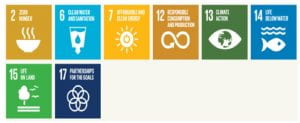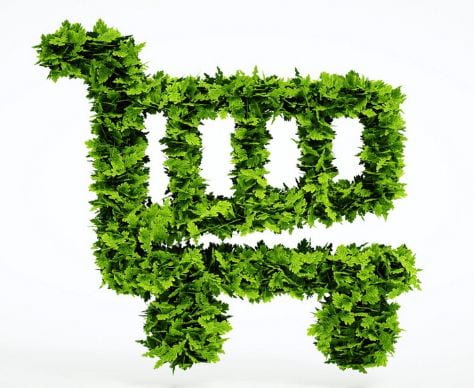Written by Stathia Bampinioti, Shamika Kulkarni, Ankit Vora, and Caroline Huskey

- Introduction
Impacting billions of customers across the globe, the consumer goods industry is one of the largest employers in the world and consumers look to these organisations to lead the conversation on global issues such as sustainability. Even in times like the current Covid pandemic, this sector is showing growth while others flounder! Where ingredients are sourced and how a product is manufactured, shipped, and packaged are important considerations for today’s consumers. Brands with purpose-driven advertising and social support are becoming more relevant to such consumers. This potential widespread impact motivated us to pick the fast moving consumer goods (FMCG) industry for our study on climate change.
- Competitor landscape considered
In the FMCG industry, sustainability is a growing priority to consumers and, thus, inevitably to companies seeing future growth. Of the top ten FMCG companies, Nestle and Unilever are the leaders when it comes to sustainability with their competitors making big changes to keep up. According to the 2015 Global Sustainability Report from Nielson, 66% of consumers are willing to pay higher prices for a sustainable brand, up from 55% in 2014. Among millennials, 73% were willing to pay a sustainability premium. This indicates that the big players need to make shifts and introduce sustainable practices to their supply chains or else risk losing market share to more sustainable companies. Unilever has taken this approach a step further than most of its competitors by introducing Sustainable Living Brands.
Considering these leading indicators of sustainability — zero waste sites, water usage, and climate action — let’s assess how the top 10 FMCG brands have done: Unilever declared itself the industry leader after “eliminating non-hazardous waste to landfill at more than 600 of its manufacturing, office and warehouse sites in 70 countries. Nestlé, which had a 2015 goal of zero waste at 10% of factories, achieved this at 22% of sites. Coca-Cola, PepsiCo, Mondeléz and P&G form the middle tranche in terms of sustainability leadership among our 10 FMCG firms. Coca-Cola has taken some actions toward sustainability through their water replenish work, 5by20 programme, and PlantBottle innovation. The 5by20 initiative, which has a goal of empowering 5 million women entrepreneurs across the value chain by 2020, has already reached 1.2 million women.
Within the FMCG industry, the UN SDGs are lauded as the golden standard which the companies then set aggressive targets to move toward. In addressing the Access to Nutrition SDG for their consumers, Unilever has achieved the top spot for recognition while Nestle is a close second and Coca-Cola has not made significant strides to fortify the nutrients in its consumer goods. This indicates Unilever’s leadership position within the competitive set.
- Unilever’s strategies
Unilever contributes to climate change both directly via its manufacturing and distribution activities, but also indirectly due to the extensive use of its products globally.
Unilever has committed to adapt its business model by setting the “Unilever Sustainable Living Plan” aiming to decouple its growth from its environmental footprint while increasing the positive social impact. Tackling climate change will enable the company to achieve more sustainable growth via cutting costs through efficiencies, reducing the risk of sustainable sourcing, and attracting consumers with sustainable, purpose-led brands.

Unilever’s goal is to halve its environmental footprint by 2030 by initiatives around 4 pillars:
- Reduce greenhouse gases in operations and supply chain and via product innovation (UN SDGs 7,12,13,15,17); by 2030, the energy consumed in factories will come from renewable sources.
- Reduce water use (UN SGDs 6,12,13,17) by reducing the water abstraction in the global factory network and halving the water associated with the consumer use of our products by 2020
- Reduce plastic and waste (UN SGDs 12,13,14,17) by halving the amount of virgin plastic used in packaging, collecting and processing more plastic packaging, designing fully reusable, recyclable or compostable packaging
- Achieve sustainable sourcing (UN SGDs 2,13,15,17) via sourcing the agricultural raw materials sustainably, investing in technology-led traceability across the value chain, and by creating tailored impact programs to help smallholders improve their crop yields while increasing the quality and consistency of the crops they grow
- What else could Unilever do?
Looking ahead, there are several steps Unilever could take to further reduce its environmental impact in line with the UN SGD goals:
- Invest in R&D programs for its product design process to identify potential more eco-friendly practices for itself operations and its suppliers as well as search for more sustainable alternatives for its raw materials. For instance, Unilever can make more progress on sustainable packaging initiatives, following in the footsteps of Nestle.
- Put in place measurement systems to track the environmental impact of its supply chain including scope 3 emissions
- Explore circular economy initiatives to find sustainable solutions for disposal at the end of useful life of its products
- Find further efficiencies in its logistics, distribution and supply chain networks to reduce the use of fossil fuels in its operations
- Set up recycling capabilities to convert its manufacturing into other useful products
In conclusion
Unilever and its competitors are undertaking conscious efforts to mitigate climate change’s operational and value chain impact, exceeding goals set internally. However, we believe this can be accelerated by collaborating as an industry and embedding best practices in each organisation’s business models for this collective problem of climate change. Changing consumer requirements for production and consumption of FMCG goods, influence the strategies for Unilever and its peers.
